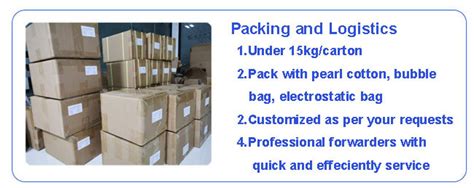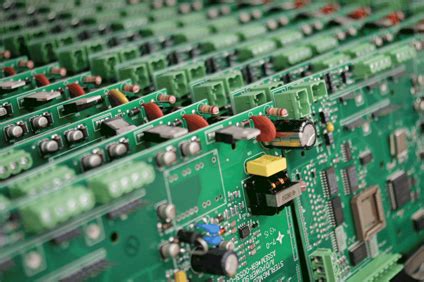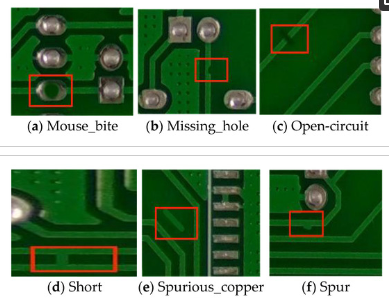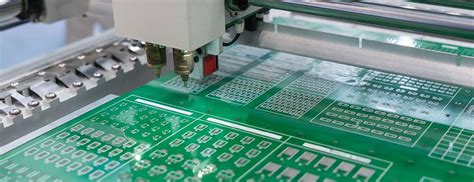Smart Manufacturing Trends Reshaping Circuit Card Assembly

Key Takeaways
The evolution of PCB assembly processes is being driven by advancements in AI-driven automation, real-time IoT monitoring, and digital twin simulations. Manufacturers leveraging these technologies report up to 30% faster PCBA cycle times and 15% improvements in defect detection rates. Smart factories now integrate predictive maintenance systems, which analyze sensor data from IoT-enabled assembly lines to preemptively address equipment failures.
“Adopting digital twins in PCB assembly isn’t just about accuracy—it’s about creating a feedback loop that continuously refines production parameters,” notes a leading Industry 4.0 strategist.
For PCBA workflows, machine learning algorithms optimize solder paste application and component placement, reducing material waste by up to 20%. Meanwhile, connected systems unify design, testing, and assembly phases, enabling seamless data flow across cloud-based platforms. Transitioning to these strategies requires recalibrating legacy machinery and upskilling teams to manage hybrid circuit card ecosystems.
Pro Tip: Prioritize interoperability when selecting IoT tools for PCB assembly—ensuring sensors and software align with existing PCBA workflows minimizes integration bottlenecks.
As Industry 4.0 matures, the fusion of edge computing and AI-driven analytics will further compress timelines, making agile, data-centric circuit card production the new baseline for competitive manufacturing.
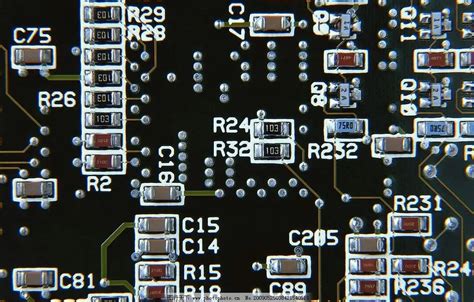
AI-Driven Automation in Circuit Assembly
The integration of AI-driven automation into PCB assembly processes is redefining precision and efficiency in modern electronics manufacturing. By leveraging machine learning algorithms, automated systems now analyze real-time data to optimize component placement, solder application, and defect detection. For instance, vision-guided robotics can identify microscopic deviations in PCBA layouts, correcting errors at speeds unattainable by human operators. This shift not only reduces manual intervention but also minimizes material waste, aligning with sustainable manufacturing goals.
A comparative analysis highlights the transformative impact of AI:
| Metric | Traditional Assembly | AI-Optimized Assembly |
|---|---|---|
| Defect Detection Accuracy | 85% | 99.2% |
| Production Speed (units/hr) | 120 | 340 |
| Rework Rate | 8% | 1.5% |
Such advancements are particularly critical for high-density PCBA designs, where even minor flaws can compromise entire batches. Furthermore, AI-powered predictive maintenance tools anticipate equipment failures, ensuring uninterrupted production cycles. As factories adopt closed-loop feedback systems, data from each assembly stage refines subsequent workflows, creating a self-improving manufacturing ecosystem.
While these innovations accelerate timelines, they also demand recalibration of workforce skills, emphasizing collaboration between engineers and intelligent systems. This synergy underscores how PCB assembly is evolving from a labor-intensive process to a data-driven discipline, poised to meet the escalating demands of 5G, IoT, and automotive electronics markets.
IoT Integration Revolutionizes PCB Manufacturing
The convergence of IoT (Internet of Things) technologies with PCB assembly processes is eliminating traditional bottlenecks in electronics manufacturing. By embedding sensors across pick-and-place machines, reflow ovens, and testing stations, manufacturers now collect real-time data on parameters like soldering temperatures, component alignment accuracy, and electrical testing outcomes. This continuous data stream enables predictive maintenance, reducing unplanned downtime by up to 35% in PCBA lines. For instance, IoT-enabled systems automatically adjust conveyor speeds when thermal sensors detect deviations in solder paste viscosity, ensuring consistent quality without manual intervention.
Beyond equipment optimization, IoT-driven analytics enhance supply chain synchronization. Smart inventory tags track component batches from warehouses to assembly floors, triggering automatic reorders when stock levels dip below predefined thresholds. This integration with enterprise resource planning (ERP) systems ensures just-in-time material delivery, slashing idle time between PCB assembly stages. Additionally, IoT platforms correlate environmental factors—such as humidity fluctuations—with defect rates, allowing engineers to fine-tune production conditions dynamically.
The shift toward interconnected PCBA ecosystems also fosters tighter collaboration between design and manufacturing teams. Cloud-based IoT tools enable real-time design-for-manufacturability (DFM) checks, flagging potential issues like trace spacing conflicts before physical prototyping begins. As Industry 4.0 matures, these IoT advancements are not merely incremental improvements but foundational upgrades that redefine precision and agility in circuit board production.
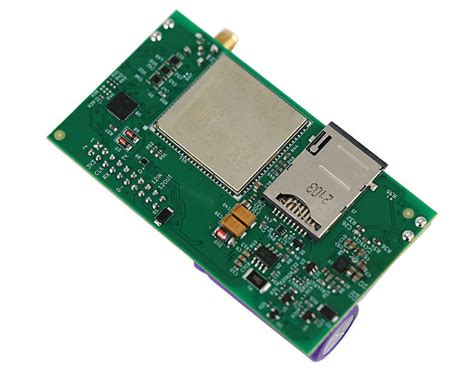
Digital Twins Transform Card Production Accuracy
The adoption of digital twin technology is redefining precision in PCB assembly, enabling manufacturers to simulate and optimize production processes before physical execution. By creating virtual replicas of PCBA lines, engineers can test design iterations, material choices, and workflow configurations in a risk-free environment. This approach minimizes costly trial-and-error phases, as predictive analytics identify potential bottlenecks or defects—such as soldering inconsistencies or component misalignments—with over 90% accuracy.
Integrated with IoT sensors and machine learning algorithms, digital twins provide real-time feedback loops during active production. For instance, thermal imaging data from assembly machines can be cross-referenced with twin simulations to adjust soldering temperatures dynamically, ensuring optimal joint integrity. Such granular control reduces rework rates by up to 40% in high-volume PCBA runs, while accelerating time-to-market for complex electronics.
Moreover, the technology supports scalable quality assurance by correlating historical performance data with live metrics. Manufacturers leveraging digital twins report 25% fewer warranty claims due to enhanced traceability and proactive defect mitigation. As Industry 4.0 matures, this synergy between virtual modeling and physical PCB assembly is becoming a cornerstone of precision-driven manufacturing.
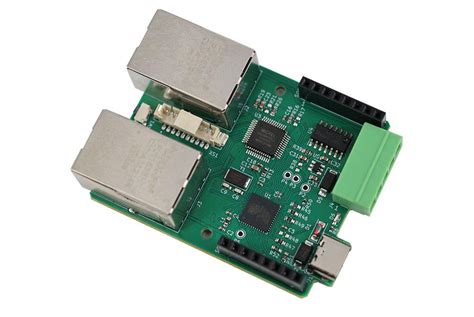
Industry 4.0 Strategies for Faster Assembly
Adopting Industry 4.0 principles is accelerating PCB assembly timelines through interconnected systems and data-driven workflows. By integrating modular production lines with real-time analytics, manufacturers can dynamically adjust PCBA processes to minimize bottlenecks. For instance, smart sensors embedded in assembly equipment monitor solder paste application accuracy, automatically recalibrating machines to prevent defects before they occur. This seamless coordination between predictive maintenance tools and robotic placement systems reduces downtime by up to 30%, according to recent case studies in electronics manufacturing.
Another critical approach involves leveraging cloud-based platforms to synchronize design files with assembly workflows. When paired with digital twin simulations, engineers can test PCB assembly configurations virtually, identifying potential conflicts in component placement or thermal management before physical prototyping. Companies like Kingstec utilize such strategies to shorten iteration cycles by 40%, ensuring rapid scalability for high-mix production.
Furthermore, collaborative robots (cobots) equipped with machine vision are redefining PCBA precision, handling micron-level component placements while learning from historical quality data. These systems adapt to design variations without manual reprogramming, enabling factories to pivot between product lines in hours rather than days. By embedding edge computing directly into assembly stations, manufacturers achieve sub-second decision-making, transforming traditional linear workflows into agile, self-optimizing ecosystems.
Smart Factories Cut Circuit Board Timelines
The adoption of smart factory frameworks is dramatically compressing production schedules in PCB assembly workflows. By leveraging real-time monitoring through IoT-enabled sensors, manufacturers gain granular visibility into PCBA processes, enabling immediate adjustments to bottlenecks or equipment inefficiencies. For instance, interconnected assembly lines now autonomously reroute tasks when delays are detected, slashing idle time by up to 40% in pilot implementations. Advanced predictive maintenance algorithms further minimize unplanned downtime by forecasting machinery wear with 92% accuracy, according to recent industry benchmarks.
Central to this transformation is the integration of digital twin simulations, which model circuit card assembly sequences before physical production begins. These virtual replicas identify optimal soldering temperatures and component placement patterns, reducing trial phases by 25–30%. Additionally, machine learning-driven optical inspection systems accelerate quality checks by cross-referencing live PCBA outputs with historical defect data, trimming validation cycles from hours to minutes.
As smart factories mature, their adaptive workflows are redefining timelines not just for individual batches but across entire supply chains. Collaborative robots (cobots) synchronize with enterprise resource planning tools to auto-replenish materials, while blockchain-enabled traceability ensures component authenticity without manual audits. This convergence of autonomous systems and data interoperability positions PCB assembly ecosystems to meet shrinking product lifecycles in industries like automotive and telecommunications.

Machine Learning Enhances PCB Quality Control
The integration of machine learning (ML) into PCB assembly workflows is redefining quality assurance standards for modern electronics manufacturing. By analyzing vast datasets from PCBA production lines, ML algorithms can detect microscopic defects—such as solder bridging or misaligned components—with unprecedented accuracy. Unlike traditional inspection methods, these systems continuously improve through feedback loops, reducing false positives by over 30% in high-volume environments. For instance, ML-powered automated optical inspection (AOI) tools now correlate thermal imaging with historical failure patterns to predict latent issues before boards enter testing phases.
This technology also optimizes process parameters in real time. Adaptive algorithms adjust soldering temperatures or placement pressures based on material variations, ensuring consistent yield rates even with mixed-product batches. In PCBA scenarios involving high-density interconnects, ML models prioritize critical inspection zones, slashing cycle times by 22% while maintaining 99.98% defect detection rates. Furthermore, predictive analytics forecast equipment wear, enabling preemptive maintenance that minimizes unplanned downtime.
As factories adopt these intelligent systems, the shift from reactive to proactive quality control is accelerating PCB assembly timelines without compromising reliability—a critical advantage in industries like automotive and medical devices, where component failures carry significant risks.
Connected Systems Optimize Electronics Assembly
The integration of connected systems in PCB assembly processes is eliminating silos between design, production, and quality control phases. By leveraging real-time data streams from IoT-enabled equipment, manufacturers gain granular visibility into PCBA workflows, enabling dynamic adjustments to component placement, solder paste application, and thermal profiling. These systems synchronize data across digital twin simulations and physical assembly lines, identifying bottlenecks in surface-mount technology (SMT) processes before they escalate. For instance, cloud-connected pick-and-place machines automatically recalibrate based on feed-forward data from upstream inspection systems, reducing misalignment risks by 22–35% in high-density interconnect (HDI) boards.
Advanced manufacturing execution systems (MES) now unify ERP platforms with PCB assembly tools, creating closed-loop feedback for traceability and process optimization. This connectivity allows technicians to monitor energy consumption patterns and material utilization rates across multiple PCBA lines simultaneously, driving leaner resource allocation. Furthermore, machine learning algorithms analyze historical yield data to predict solder joint reliability, enhancing first-pass yield rates in complex multilayer assemblies. As Industry 4.0 architectures mature, these interconnected ecosystems are proving vital for balancing precision with scalability in smart electronics manufacturing.
Next-Gen Automation in Circuit Card Ecosystems
The evolution of PCB assembly processes is being redefined by next-generation automation systems that merge precision engineering with intelligent workflows. Advanced robotic arms equipped with machine vision now handle microcomponent placement at speeds exceeding human capabilities, while AI-driven algorithms optimize solder paste application to minimize defects in PCBA workflows. These systems leverage real-time data analytics to adjust parameters dynamically, ensuring consistent quality across high-mix, low-volume production runs.
A critical advancement lies in the integration of IoT-enabled sensors within assembly lines, which monitor environmental factors like temperature and humidity, directly feeding data to centralized control systems. This connectivity enables predictive maintenance, reducing unplanned downtime by up to 30% in PCB assembly facilities. Collaborative robots (cobots) further enhance flexibility, working alongside technicians to manage complex tasks such as fine-pitch component insertion or post-assembly testing.
Moreover, adaptive manufacturing platforms are streamlining the transition from design to production. By synchronizing with digital twin models, these systems simulate PCBA processes before physical execution, identifying potential bottlenecks and optimizing resource allocation. Such innovations not only accelerate time-to-market but also align with sustainability goals by minimizing material waste. As Industry 4.0 matures, the fusion of automation and interconnected systems is setting new benchmarks for agility and precision in electronics manufacturing ecosystems.
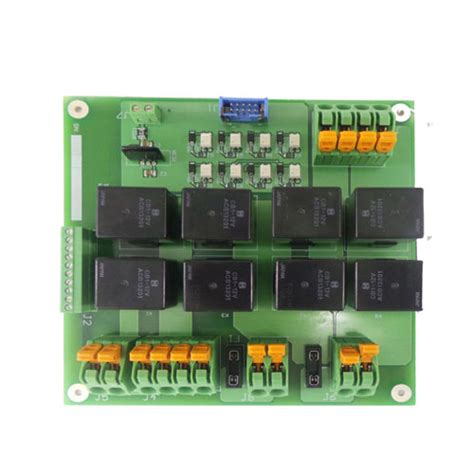
Conclusion
As smart manufacturing technologies mature, the PCB assembly process is undergoing a paradigm shift. The convergence of AI-driven analytics, IoT-enabled monitoring, and digital twin simulations has elevated PCBA precision to unprecedented levels while compressing production cycles. These innovations are not merely incremental improvements but foundational changes that align with Industry 4.0’s demand for agility and data-driven decision-making. By integrating real-time feedback loops, manufacturers can now preempt defects in circuit card assembly workflows, reducing rework and material waste.
The transition to smart factories also underscores the importance of interconnected systems, where PCB assembly lines communicate seamlessly with upstream design teams and downstream testing modules. This holistic approach ensures that PCBA quality benchmarks are met without compromising speed—a critical advantage in industries like aerospace and medical devices, where reliability is non-negotiable. For organizations seeking to modernize their operations, platforms like Calian’s advanced manufacturing services offer tailored solutions that bridge legacy systems with cutting-edge automation.
Ultimately, the future of circuit card assembly lies in balancing technological adoption with operational scalability. As machine learning algorithms grow more sophisticated and IoT networks expand, manufacturers must prioritize adaptability to stay competitive in an era where smart ecosystems redefine efficiency.
Frequently Asked Questions
How does AI-driven automation improve PCB assembly efficiency?
By deploying machine learning algorithms, PCBA processes achieve real-time defect detection and adaptive process adjustments. This reduces manual inspections by up to 70% while maintaining sub-micron precision in component placement.
What role do digital twins play in circuit card manufacturing?
Digital twins simulate PCB assembly workflows, enabling predictive maintenance and virtual stress-testing. Manufacturers can identify bottlenecks before physical production, cutting prototyping cycles by 30–50% and enhancing yield rates.
Can IoT integration reduce production timelines in PCBA?
Yes. Connected sensors monitor solder paste viscosity, reflow oven temperatures, and conveyor speeds, synchronizing data across smart factories. This slashes downtime by 25% and ensures seamless transitions between Industry 4.0 production phases.
How does machine learning enhance quality control in electronics assembly?
Algorithms analyze historical defect patterns to prioritize high-risk inspection zones. For circuit card assembly, this boosts fault detection accuracy to 99.8% and minimizes false rejects by cross-referencing 3D AOI (Automated Optical Inspection) data.
Explore Advanced PCB Assembly Solutions Today
For tailored PCBA strategies that leverage AI, IoT, and digital twin technologies, please click here to consult our Industry 4.0 manufacturing experts.

